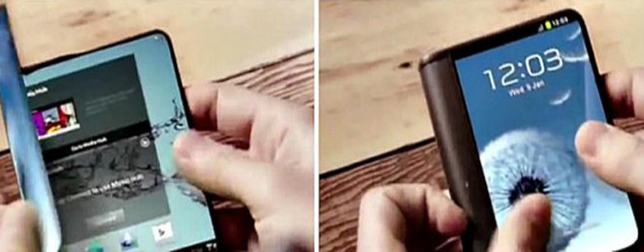A number of tech firms are currently testing and prototyping foldable phones with flexible screens as a possible solution for the smartphones of the future. But the biggest problem with foldable phones right now is to decide what to do about the screen that will be repeatedly folded in half, as this is highly likely to leave a visible crease in the screen.
Despite numerous reports in recent days that suggest Samsung is working on foldable phones, Motorola is among the several others working on the prototypes. The company has filed a patent that could solve one of the biggest problems with upcoming foldable phones.
LetsGoDigital spotted a patent by Motorola where the phone manufacturer details a ‘method to recover permanent set in a foldable display’.
Read more HTC Reportedly Working on a Blockchain-Powered Android Smartphone
Motorola’s patent is for a “fold out” smartphone, which means that the phone, when folded, has the screens on the outside. Motorola seeks to solve the problem with current flexible OLED screens, which regardless of their flexible property, can’t yet be entirely folded down flat like paper.
Motorola’s solution comes in the form of sensors and a thermal element built into the foldable part of the phone.
The sensors would pinpoint when the phone is completely flat with the screen off; the thermal element would then be activated to heat the hinge and remove the creases, which Motorola calls ‘semi-permanent deformation’.
Equally interesting is the fact that a design for a case accessory is included in the patent. The case has three functions. One is to protect the exposed screens while still leaving cutouts for a part of the screen and the camera. It can also work as the base while using the phone in tent mode. In addition, the module can track how long the panel has been in the folded position even when the phone is switched off. Once the panel surpasses the predefined time limit, the screen will then automatically go into recovery mode as soon as it’s unfolded. Finally, the patent also mentions wireless charging capabilities, something not easily attainable with this type.
Read more This New Technology Turns Your Skin into a Touchscreen for Your Smartwatch
As with any other patent, this might not ever be used in a product, but it points to potential solutions to the problem.
According to the phone maker, deformities only start to show in the panel after it’s been folded for an extended period of time.
Samsung and LG will probably be among the first to market these foldable phones and they probably have solutions of their own. Therefore, whether or not we start seeing heated hinges it appears that creases may not be a problem for folding phones after all.













